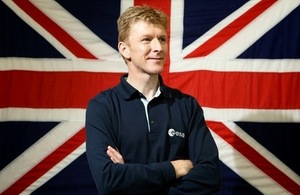
|
Both special and general relativity have a reputation for being very complicated theories to understand. While it is true that one needs some mathematical machinery to really master these theories, Egdall does a great job in showing that it is possible with a bare minimum of high school mathematics to get an appreciation of the main ideas.
|
Edgall does not completely stay away from some mathematics, though as it is isolated somewhat from the main text, the mathematically shy should not be scared away from this book. The style is lighthearted and is full of thought experiments illustrated by short entertaining stories.
The author does an excellent job in highlighting the main features of special and general relativity in a way suitable for the lay reader to understand. Moreover, the development of the theory is presented in a chronological/historical context by trying to describe Einstein’s trail of thought and how he was influenced by the various problems with physics found in the late 1800’s. We get a good overview of Einstein the man from this book.
However, like all popular science books, there are the odd statements like “…the photon’s perspective” and “..spacetime curvature has energy” which any physicist will question. That said, I do consider the book well-written, entertaining and a useful introduction to the ideas of relativity for the lay person.
Outline
The book is divided into two chapters, an appendix with more mathematical details and a rather extensive list of notes with sources. Part I deals with special relativity describing the initial development of the theory starting from the conflict between classical mechanics and electromagnetic theory. The strange consequences of Einstein’s special relativity including the idea of space-time, time dilation, length contraction and his famous equation E=mc^2 are discussed.
Part II introduces us to general relativity which is the most accurate theory of gravity know to science. The fundamental idea is that gravity should be viewed as space-time curvature and some of the consequences of this are discussed in this book. Some aspects of modern cosmology and the big bang theory are also briefly discussed.
Note: This book is based on lay courses in modern physics Edgall teaches at Lifelong Learning Institutes at several universities in South Florida.
Paperback: 300 pages
Publisher: World Scientific Publishing Company (February 24, 2014)
Language: English
ISBN-10: 9814525596
ISBN-13: 978-9814525596
Link
Einstein Relatively Simple








